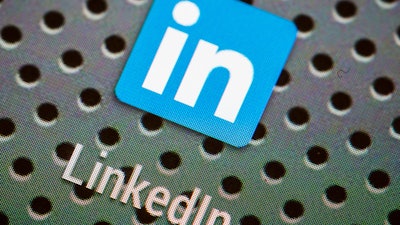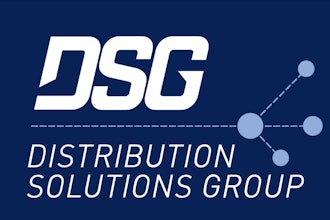
There used to be a time — not so long ago — when launching a company website was considered “press release-worthy.” Seems funny today, since it could be argued that if a company doesn’t have a website, do they even really exist? An even shorter time ago, social media came along and it didn’t take long for companies to recognize the value of having an “omnipresence,” where customers, business partners, shareholders and employees could follow them on the channels they prefer. Not that a company needs to be on every social media platform, but if they don’t have either a LinkedIn, Twitter, Facebook or Instagram account, again it could be argued — do they even exist?
Lately, I’ve been getting the question from clients regarding whether or not their CEO needs to be (or at least should be) on LinkedIn. Whether you feel strongly that a CEO should or should not be on LinkedIn, there are pros and cons on both sides of the argument that are worth pondering.
First, let’s take a look at a few of the benefits of a company CEO being on LinkedIn:
Rallying the troops: Many companies understand the importance of having a mission statement, a well-articulated vision, and a declaration of their values. In fact, pick a company and chances are you can look up these statements front and center on its website. Having a CEO on LinkedIn who is vocal about their mission, vision and value statements — and proactively addressing how the company is living up to them — can act as a rallying cry for all employees to insert these mantras into everything they do at work. It reminds employees of what their company stands for, what’s expected of them, why they do what they do for a living … and keeps the mission top of mind. And that’s good for employee morale (and for customers and prospects to see!).
A soapbox for important issues: Impact of the current ongoing COVID-19 pandemic. The closing of one of the company’s facilities. A looming recession. These are all issues that CEOs are vocal about in various settings. Some CEOs fly across the country and do town halls with their employees. Sometimes these are individual meetings with partners, customers and other stakeholders. But for certain big issues that companies are grappling with, I believe there is credibility in transparency. A company’s leader can take these issues head-on in a well-written LinkedIn post that shows how the company is navigating macroeconomic issues — and what the plan is to get the ship to calmer water. Or why a company is well-situated and won’t be affected by an issue. This type of open clarity can be appreciated by not only employees — but by suppliers, investors and clients.
Attracting talent: Unemployment is at a historical low; there are more jobs than job seekers. While this is great news for workers, attracting talent is one of the biggest challenges that companies are faced with today. Having a CEO opine on issues in an open forum such as LinkedIn, discuss what makes the company unique, lay out the reasons why the path forward is full of opportunities at the firm, and highlight the company’s local community involvement and volunteer work are all areas that could get potential job seekers interested in applying for a position. The tone is set at the top — and people looking for a career need to feel like the CEO shares their values and that there’s a future of growth at the company. The HR department is sure to celebrate the help from the top in attracting the best talent!
However, there are reasons why CEOs should stay away from social media platforms like LinkedIn. Some of those include:
An open platform for complaints: A CEO may have every good intention of putting out a perspective on LinkedIn about an industry trend or a company update. And the executive may hope to get a lot of views, likes, and comments — after all, LinkedIn is a social platform. But most companies have their detractors, displeased ex-customers, or unhappy former (or current) employees. Some of these people may use a CEO’s LinkedIn post as an open forum to share their distain with the company — and perhaps try to warn others from doing business with — or working for — the company. Therefore, a plan needs to be in place to actively monitor and address any negative comments (usually handled by the corporate communications or social media teams). And the company will be judged on how they respond to these critics.
The face of the company exits: An executive’s social media presence should come across as organic, natural, and highlight the person’s personality (their interests, their style of talking, personal anecdotes, etc.). The CEO is the face of the company, the top brand ambassador, and the biggest cheerleader. So what happens when the CEO leaves the company? Their large social following, the company posts, the thought leadership on big issues … it all goes away. It’s no longer part of the company. A debate could be had — is it better to have LinkedIn posts come from the company LI page instead?
It’s a time commitment: How often should CEOs be posting on LinkedIn? While there’s no exact answer, I think we can all agree that they should be active…and that can have various definitions. To me, I think showing activity several times a week is important (liking news articles, accepting invitations to connect, commenting on other people’s posts). But writing their own LinkedIn article takes time and effort. So maybe this is just once a month? Once a quarter? Either way, a CEO has a company to run. Can they take time to sit down, focus, collect their thoughts, and articulate their message in a 400-800 LI post? Now, I know not all CEOs write their own content, but still, they do need to review what’s written. And suggest edits. And review again. So, still…it’s a process. If the CEO isn’t able to be active on LinkedIn, then perhaps it’s more of a headache and not worth pursuing.
The Final Word
Bottom line, there are reasons why a CEO should be on LinkedIn. Clearly there are benefits. But as much of an upside as there may be, downsides do exist. Every CEO contemplating if they should join LinkedIn — or for any communications executive who is making a case to their CEO — needs to consider both the pros and cons. LinkedIn can be a credible and effective tool to promote transparency, leadership and clarity of message. But there are drawbacks, such as the openness of  Cianciulli
Cianciulli
Scott Cianciulli is a Partner at The Plunkett Group — a group of dedicated communications professionals with decades of experience in corporate communications, media management, investor relations and executive training. Cianciulli has over a decade of experience in serving as a strategic communications advisor and partner to a broad range of corporations, professional organizations and entrepreneurs.






















